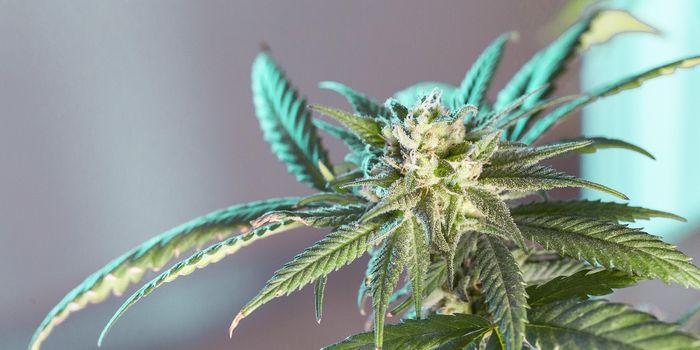Cannabidivarin...The Next Medicinal Phytocannabinoid?
There are over 100 phytocannabinoids in the Cannabis sativa plant; while ![]() 9-tetrahydrocannabinol (THC) and cannabidiol (CBD) have gained the most attention in the past few decades for multiple reasons, there are others being found to contribute medicinally as well. Cannabidivarin (CBDV) is one of those currently being looked at clinically for its anticonvulsant properties as well as its potential ability to help in mouse models of conditions with brain atrophy.
9-tetrahydrocannabinol (THC) and cannabidiol (CBD) have gained the most attention in the past few decades for multiple reasons, there are others being found to contribute medicinally as well. Cannabidivarin (CBDV) is one of those currently being looked at clinically for its anticonvulsant properties as well as its potential ability to help in mouse models of conditions with brain atrophy.
CBDV was first found and isolated as a phytocannabinoid in 1969 and is believed to work via cannabinoid receptor 2 (CB2) dependent mechanisms and other means as part of our human endocannabinoid system. CBD and CBDV are structurally similar; they differ by a single shortened carbon side chain on CBDV (2 less carbons).
In a study published back in 2012, CBDV administered p.o. (per os) was examined and found to be effective as an effective anticonvulsant with little motor side effect. Many anti-seizure drugs have considerable side effects at a clinically effective dose; additionally, epilepsy treatments must be successfully administered as an oral therapy. The researchers used a CBDV solution of varying concentrations (50, 100, or 200 mg•kg-1 in ethanol) from GW Pharmaceuticals. Notably, GW Pharmaceuticals is the company that produces Epidiolex, the first FDA approved epilepsy drug, approved in late June 2018, based on phytocannabinoids and not synthetic cannabinoids.
A more recent study, published July 26, 2018, continues the work with CBDV as a clinically relevant alternative for treatments involving neurological change. The study, published in Neuropharmacology, investigated the use of CBDV for Rett Syndrome symptoms including behavioral alterations and brain atrophy as a result of the condition. Rett syndrome is a neurodevelopment disorder caused by mutations in the MECP2 gene in almost all cases (reportedly 95%). It is a rare condition and no cure has been found to date. Rett syndrome is usually recognized in infancy in girls but is noticed later in boys and has similar characteristics to autism including cerebral palsy or non-specific developmental delay. As mentioned, the syndrome is caused my mutations of the MECP2 gene found on the X chromosome and affects brain function, notably in cognition as well as affecting sensory, autonomic, motor, and emotional abilities. Many of the processes that result in impaired brain function in Rett syndrome are connected to the physiologically regulated processes of the endocannabinoid system. Researchers used animal models of Rett syndrome to evaluate the efficacy of CBDV administered for 14 days. The group reported that the treatment rescued behavioral and brain alterations, reestablished a healthy baseline status including brain weight. They also observed notably improved motor coordination. They evaluated the mechanism for these changes and found increased levels of a G protein-coupled receptor 55 (GPR55) in the mouse hippocampus. It has been established that GPR55 is an antagonist of GPR55 so the authors suggest these findings indicate this G protein receptor may be a potential target for treatment of this particular condition. In any case, the potential for further study with CBDV as a valuable therapeutic option will continue.
Sources: NCI Open Chemistry Database, Neuropharmacology, British Journal of Pharmacology, Rettsyndrome.org,









